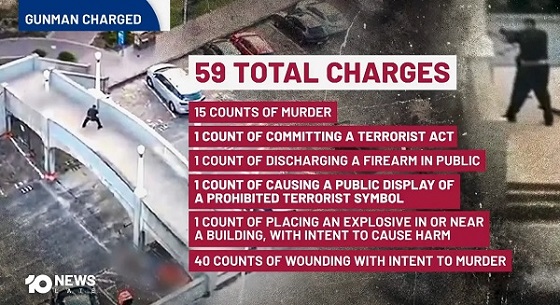Calgary
New text and online reporting tool to track rising incidents of hate speech and racism towards Asians

Calgary-AB
Act2endracism launches a new text and online reporting tool to gather information on microaggressions, hate speech and racism directed towards Asians due to Covid-19.
The tool is the latest resource to be developed in Canada to gather information on incidents, which often go unreported.
The texting and online reporting tool is a virtual helper named, ‘Mei’, which takes a victim through a series of questions to document an incident. Mei was developed by Linda Chan, the founder of BIGSBPS technology solutions in Calgary. The technology was created for the financial and mortgage industry initially but with escalating violence and aggression towards Asians due to the pandemic, Chan adapted it as a mechanism to report hateful incidents.
Former Alberta MLA Teresa Woo-Paw, of Action, Chinese Canadians Together (ACCT) Foundation, stated, “May is Asian Heritage Month and we thought it was the perfect name for the new multilingual, national text line. Racism is ugly and we wanted to make reporting easier and more supportive. It’s quick and easy to use. We encourage people to share their experiences to build community.”
ACT2endracism was created in just two weeks as a coordinated response between thousands of concerned Canadians worried about escalating anti-Asian sentiment. The network pressed the Conservative Party to expel one of its MPs for racist remarks directed at Chief Public Health Officer, Dr. Theresa Tam. The inaction from our leaders normalizes hateful behaviour.
Judy Hanazawa, Greater Vancouver Japanese Canadian Citizens’ Association President, added,
“We encourage everyone to add this number, 587-507-3838 to their contact list. We offer support to victims and it allows bystanders to file a report if they witness an attack. If you are injured and in immediate danger you should call 911.”
The reporting tool offers an option to those who may be uncomfortable with reporting incidents to police. The network is collaborating with other community organizations, which are also collecting data.
Data will be used to help develop education and anti racism initiatives. The network will refer people to community supports and track trends.
Alberta
Calgary’s new city council votes to ban foreign flags at government buildings

From LifeSiteNews
It is not yet clear if the flag motion applies to other flags, such as LGBT ones.
Western Canada’s largest city has put in place what amounts to a ban on politically charged flags from flying at city-owned buildings.
“Calgary’s Flag Policy means any country recognized by Canada may have their flag flown at City Hall on their national day,” said Calgary’s new mayor Jeromy Farkas on X last month.
“But national flag-raisings are now creating division. Next week, we’ll move to end national flag-raisings at City Hall to keep this a safe, welcoming space for all.”
The motion to ban foreign flags from flying at government buildings was introduced on December 15 by Calgary councilor Dan McLean and passed by a vote of 8 to 7. He had said the previous policy to allow non-Canadian flags to fly, under former woke mayor Jyoti Gondek, was “source of division within our community.”
“In recent months, this practice has been in use in ways that I’ve seen have inflamed tensions, including instances where flag raisings have been associated with anti-Semitic behavior and messaging,” McLean said during a recent council meeting.
The ban on flag raising came after the Palestinian flag was allowed to be raised at City Hall for the first time.
Farkas, shortly after being elected mayor in the fall of 2025, had promised that he wanted a new flag policy introduced in the city.
It is not yet clear if the flag motion applies to other flags, such as LGBT ones.
Despite Farkas putting forth the motion, as reported by LifeSiteNews he is very much in the pro-LGBT camp. However, he has promised to focus only on non-ideological issues during his term.
McLean urged that City Hall must be a place of “neutrality, unity, and respect” for everyone.
“When City Hall becomes a venue for geopolitical expressions, it places the city in the middle of conflicts that are well beyond our municipal mandates,” he said.
As reported by LifeSiteNews, other jurisdictions in Canada are considering banning non-Canadian flags from flying over public buildings.
Recently a political party in British Columbia, OneBC, introduced legislation to ban non-domestic government flags at public buildings in British Columbia.
Across Canada there has also been an ongoing issue with so-called “Pride” flags being raised at schools and city buildings.
Alberta
Calgary mayor should retain ‘blanket rezoning’ for sake of Calgarian families

From the Fraser Institute
By Tegan Hill and Austin Thompson
Calgary’s new mayor, Jeromy Farkas, has promised to scrap “blanket rezoning”—a policy enacted by the city in 2024 that allows homebuilders to construct duplexes, townhomes and fourplexes in most neighbourhoods without first seeking the blessing of city hall. In other words, amid an affordability crunch, Mayor Farkas plans to eliminate a policy that made homebuilding easier and cheaper—which risks reducing housing choices and increasing housing costs for Calgarian families.
Blanket rezoning was always contentious. Debate over the policy back in spring 2024 sparked the longest public hearing in Calgary’s history, with many Calgarians airing concerns about potential impacts on local infrastructure, parking availability and park space—all important issues.
Farkas argues that blanket rezoning amounts to “ignoring the community” and that Calgarians should not be forced to choose between a “City Hall that either stops building, or stops listening.” But in reality, it’s virtually impossible to promise more community input on housing decisions and build more homes faster.
If Farkas is serious about giving residents a “real say” in shaping their neighbourhood’s future, that means empowering them to alter—or even block—housing proposals that would otherwise be allowed under blanket rezoning. Greater public consultation tends to give an outsized voice to development opponents including individuals and groups that oppose higher density and social housing projects.
Alternatively, if the mayor and council reform the process to invite more public feedback, but still ultimately approve most higher-density projects (as was the case before blanket rezoning), the consultation process would be largely symbolic.
Either way, homebuilders would face longer costlier approval processes—and pass those costs on to Calgarian renters and homebuyers.
It’s not only the number of homes that matters, but also where they’re allowed to be built. Under blanket rezoning, builders can respond directly to the preferences of Calgarians. When buyers want duplexes in established neighbourhoods or renters want townhomes closer to work, homebuilders can respond without having to ask city hall for permission.
According to Mayor Farkas, higher-density housing should instead be concentrated near transit, schools and job centres, with the aim of “reducing pressure on established neighbourhoods.” At first glance, that may sound like a sensible compromise. But it rests on the flawed assumption that politicians and planners should decide where Calgarians are allowed to live, rather than letting Calgarians make those choices for themselves. With blanket rezoning, new homes are being built in areas in response to buyer and renter demand, rather than the dictates of city hall. The mayor also seems to suggest that city hall should thwart some redevelopment in established neighbourhoods, limiting housing options in places many Calgarians want to live.
The stakes are high. Calgary is not immune to Canada’s housing crisis, though it has so far weathered it better than most other major cities. That success partly reflects municipal policies—including blanket rezoning—that make homebuilding relatively quick and inexpensive.
A motion to repeal blanket rezoning is expected to be presented to Calgary’s municipal executive committee on Nov. 17. If it passes, which is likely, the policy will be put to a vote during a council meeting on Dec. 15. As the new mayor and council weigh changes to zoning rules, they should recognize the trade-offs. Empowering “the community” may sound appealing, but it may limit the housing choices available to families in those communities. Any reforms should preserve the best elements of blanket rezoning—its consistency, predictability and responsiveness to the housing preferences of Calgarians—and avoid erecting zoning barriers that have exacerbated the housing crisis in other cities.

Austin Thompson
-

 Artificial Intelligence2 days ago
Artificial Intelligence2 days agoUK Police Pilot AI System to Track “Suspicious” Driver Journeys
-

 Business2 days ago
Business2 days agoJudge Declares Mistrial in Landmark New York PRC Foreign-Agent Case
-

 International22 hours ago
International22 hours agoGeorgia county admits illegally certifying 315k ballots in 2020 presidential election
-

 Digital ID2 days ago
Digital ID2 days agoCanadian government launches trial version of digital ID for certain licenses, permits
-

 International2 days ago
International2 days agoWorld-leading biochemist debunks evolutionary theory
-

 Business13 hours ago
Business13 hours agoSome Of The Wackiest Things Featured In Rand Paul’s New Report Alleging $1,639,135,969,608 In Gov’t Waste
-

 Business2 days ago
Business2 days agoThe “Disruptor-in-Chief” places Canada in the crosshairs
-

 Energy12 hours ago
Energy12 hours ago‘The electric story is over’










